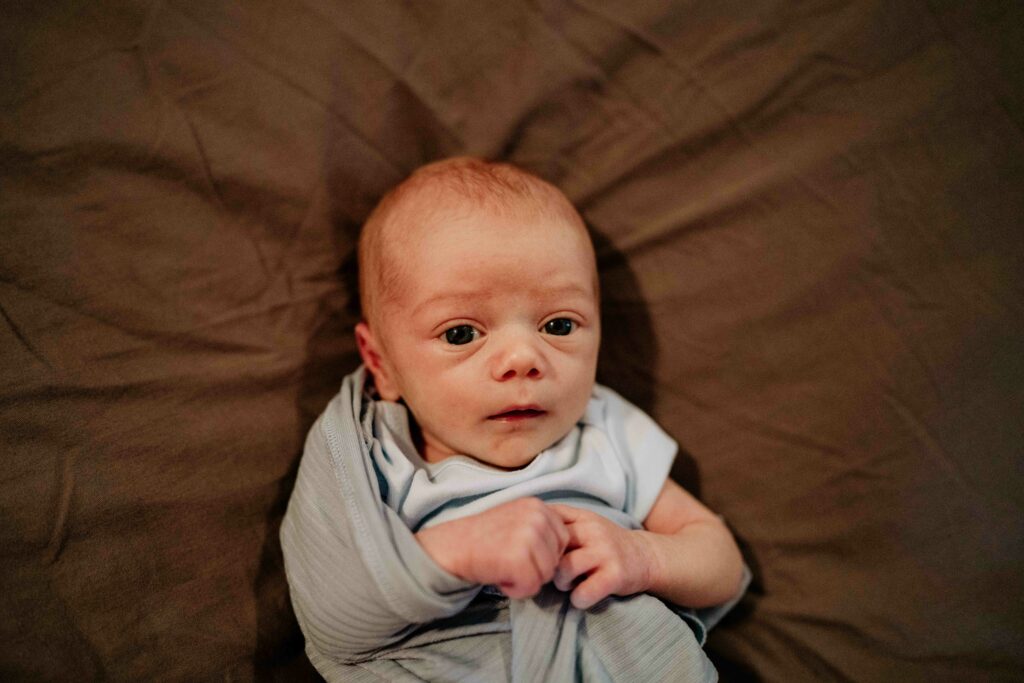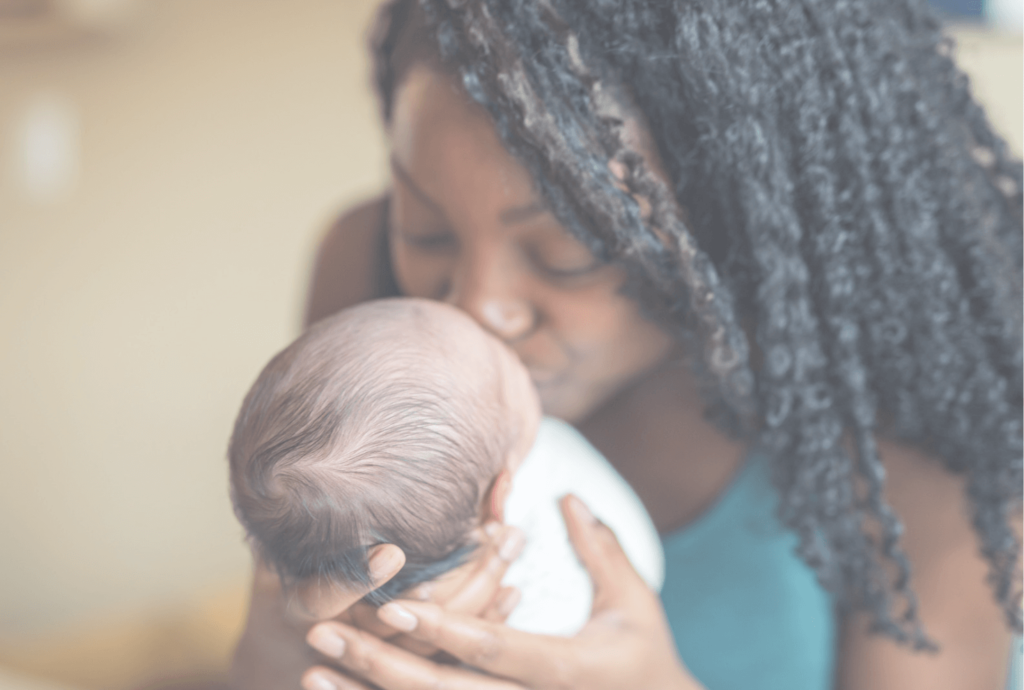One of the biggest struggles with having a newborn is lack of sleep. I mean there are obviously other struggles as well, like feeding issues, jaundice, the transition to becoming a parent, but learning to deal with the broken up, lack of sleep is tough. You would think that because newborns sleep for approximately 16-18 hours of the day that the sleep part would be easy! But it’s a big challenge. Let’s chat about three things that you can do to help your baby sleep tonight.

Create A Calming Bedtime Routine
Benefits of a Bedtime Routine
Even as early as 4-6 weeks you can start implementing a bedtime routine for your baby. If you think about it, your baby’s day really doesn’t change that much. They wake up, eat something, hang out with mom or dad, sleep and then the whole thing repeats itself. Starting a routine it tells your baby that there is something different about this sleep, that it’s not just a short nap, but something longer.
Step-by-Step Bedtime Routine
Bath
A warm bath or hands/face wash is the first step. For newborns 0-3 months start by either giving them a bath, or you can just offer a warm hands and face wash with a washcloth. I personally just like to offer a little wipe down with a warm washcloth because giving a bath every evening sounds like too much for me to implement! However, if you love giving baths then feel free to offer one.
Massage and Diaper Change
Next, I would change your baby’s diaper and offer a little massage and your favorite baby lotion. This part of the routine is not only moisturizing for their skin, but it also continues to send that signal that there is something different about this sleep. Massages are also relaxing and can help promote relaxation for your baby, getting them ready for sleep.
Swaddle

Zip them into your favorite swaddle. I love the swaddles by Love To Dream. They allow your baby’s hands to be swaddled up, but they are still tight enough to suppress the startle reflex. I found that my baby’s loved to have their hands up by their face and I would notice that they would rub their face with their hands in their swaddle for comfort as they were getting ready to fall asleep. When it comes to swaddles you want to make sure that they aren’t too tight around your baby’s hips because you want them to have good hip flexion. Sometimes you will see babies wrapped up tightly in a swaddle blanket and they look like a baby burrito, and while it makes for a cute picture, it doesn’t usually allow for the hip flexion needed to prevent hip dysplasia.
Feeding
Feeding is the final step of the bedtime routine. As you breastfeed or bottle feed your baby will start getting more relaxed and start falling asleep. This is normal and expected for newborn behaviour. As your baby gets older (around 4 months) then I would change the bedtime routine and move the feed to the beginning, but for now your baby will fall asleep as they are feeding and that is normal. You can watch your baby for signs of an effective feed (see instagram reel about effective feeding here), and once you notice that they are no longer actively feeding, then its time to give them a kiss and put them into their sleep space.

Help Your Baby Understand Days and Nights
Circadian Rhythm
You have probably heard that newborns have their days and nights mixed up, but maybe are wondering if there is anything that you can do to help? You are in luck! There are a couple things that you can do to help your newborn start to understand the difference between days and nights.
The first thing is making a BIG deal out of morning. When you wake up, open up all the blinds and let all the natural light in! If you are able to, try to get out for a walk in the morning. Fresh air and sunlight help create melatonin (the sleep hormone) and this will signal to our little one that its daytime. And then around 7-8 pm shut all the blinds in the house and talk in quieter voices to signal that the day is winding down. This helps your baby understand that there is a difference between day and night and will help them sleep better.
Get in Sync with Your Baby’s Awake Windows
Recognizing Tired Cues and Awake Windows
Thinking about timing is another thing to help your baby get a better night’s sleep. Awake windows are a general way of looking at how much time a baby can be awake for before they need sleep. A baby 0-4 weeks old can only stay awake for about 45-60 minutes before they need a nap. That means that you need to do all the things (feeding, diaper change, tummy time) in that 45 minute period before your baby is ready for sleep! As they get older they can start to tolerate more awake time (see graph below).

Babies typically have shorter awake times in the morning and longer awake times in the evening. So it’s common that your baby is showing those tired cues (see reel HERE for newborn tired cues) at the 30-45 minute mark in the morning and will be able to stay awake for a longer period of time in the evening.
Are you struggling with trying to figure out this sleep stuff for your newborn? Do you want some advice from a professional? Check out my Newborn Packages Here. I also offer a Newborn Support Call, in which you can ask me all your questions in an hour long zoom call. What has been the most challenging thing for you about your baby?



